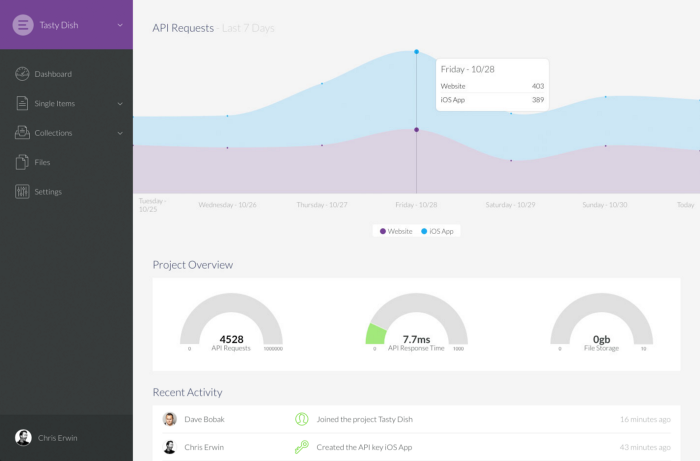CMS. Just seeing the letters C. M. S. makes the average developer’s blood pressure spike. That simple acronym induces dread, stress, and our basic survivalist fight or flight instincts. Some will fight against the CMS and bend it to their will, others will run for the hills searching for a better way. How did it get this way? Why do we hate our Content Management Systems so much?

Today’s traditional Content Management Systems were born in a time long ago. They were born in an age when blogs were a coveted personal slice of the web, instead of the river of advertisements thinly veiled as content that they are today. The traditional CMS was born in a time when PHP and Internet Explorer reigned supreme. There was only one screen to display your website on, and it sat on your desk. The CMS was a wondrous tool in this bygone era. It did one job, and it did it really well. You could go from Joe Six-Pack to website owner with your own personal pulpit within hours. Tired of the way your website looks? simply download a new theme and you’re the belle of the ball again.
Slowly the web continued to evolve. New browsers were created, new devices were invented, new programming languages were developed and old ones had new life injected into them. Companies big and small wanted their own slice of the web too, but they wanted more than just a blog. Then app stores threatened the very existence of the web and companies big and small needed apps to sell their wares. During this continual evolution the sturdy and trusty CMS had to evolve too, however it couldn’t change its core principals and leave its loyal bloggers behind. Instead developers of all different stripes created plugins and modules to fill the gaps in their trusty CMS to meet modern day needs.
Your CMS is now a sturdy core built for blogging with a dozens of plugins and modules cobbled together to manage your now complex website. Even more plugins are added so that you can use that website content within your other apps. These plugins and modules all follow different programming principals, development timelines, and goals. Many of the plugins become abandonware and join the masses of unmaintained code clinging to life. Your website and apps now rely on these rickety glued together plugins and modules. When you start to investigate and begin poking around the sturdy core, you soon realize the sturdy core isn’t quite as sturdy as you once thought. It’s more of a popsicle stick house than the sturdy fortress you envisioned. The stress, dread and increased blood pressure soon follow.
There Must Be a Better Way
I’ve been down this road of dread and regret plenty of times. For many years I worked in a well respected design agency and I’ve seen far too many terrible CMS products. Each time I was faced with choosing a CMS my mind always wandered towards “Let’s just build our own custom CMS”. Sound familiar? of course it does, we’ve all been there. However the reality of deadlines always brings you back to the chore of picking the least worst solution for your project.

After the agency I worked for closed up shop, I found myself with some free time (read more here). I wanted to create something new and the idea I kept coming back to was building a better CMS. I wanted to build the tool I had dreamt about in my agency days. We knew it was tool that was needed, we knew it was tool that would be used, and we knew that we could build something better.
“Build a CMS… really? that’s not cool or sexy in any way. People hate content management systems”— Everyone
Our product would focus on doing one thing really, really well: managing content. Traditional CMS products manage everything from content to your actual website code. They dictate how and where you build your website and we wanted to move away from that. We didn’t want to dictate programming languages, or templating libraries. We wanted developers to have the freedom to use any programming language, framework, or library on any device or platform. We wanted to create a product that’s focused solely on managing content.
After many months of hard work, our labor of love started to take shape. Elemeno was born. It was born in an age where everyone has multiple screens on devices of different shapes and sizes. Programming languages, frameworks, and best practices change on a weekly basis. Websites are juiced versions of their former self. It was born in an age where rickety plugins simply won’t do.


Elemeno is an API based content management platform that follows a few basic principals:
- Front End Agnostic: We don’t want to dictate where you can use your content, or how you build your projects. As long as your project can communicate via HTTP we can deliver your content quickly and easily.
- Cloud Based: You shouldn’t have to worry about setting up and maintaining databases and servers just to run your CMS. No more tediously updating your CMS, plugins, templates, and databases. We’ll take care of the infrastructure and you take care of your content and projects.
- Easy to Use: So many systems require deep product expertise and developer knowledge to truly make use of it. We want everyone on your team to be able to contribute easily with little to no learning curve. Everyone from content strategists, authors, editors, and developers should feel comfortable and productive.
Our core product is ready for use and during our public beta period all projects are free and unlimited. We have many features on our roadmap, and lots of work ahead of us. We hope you’ll break free of your CMS shackles and join us on our journey to make you fall in love with your CMS again. We truly want to make Elemeno a product loved by the community and we would love to hear your feedback.